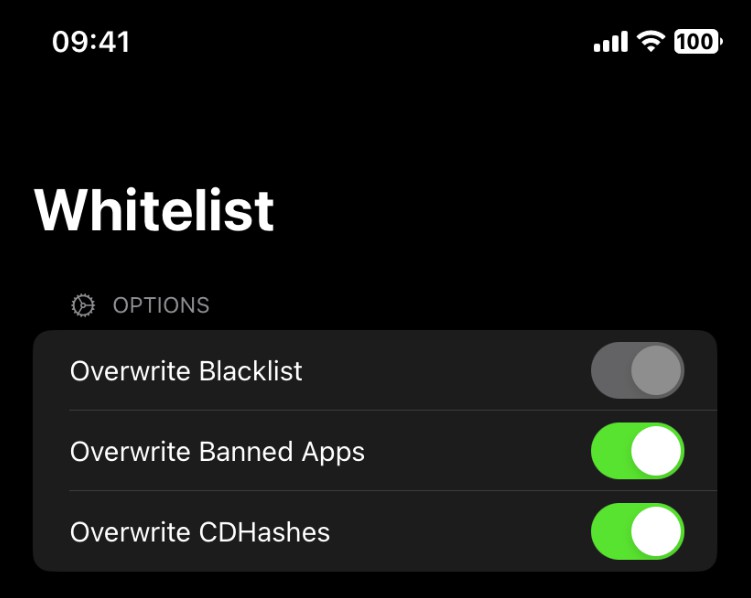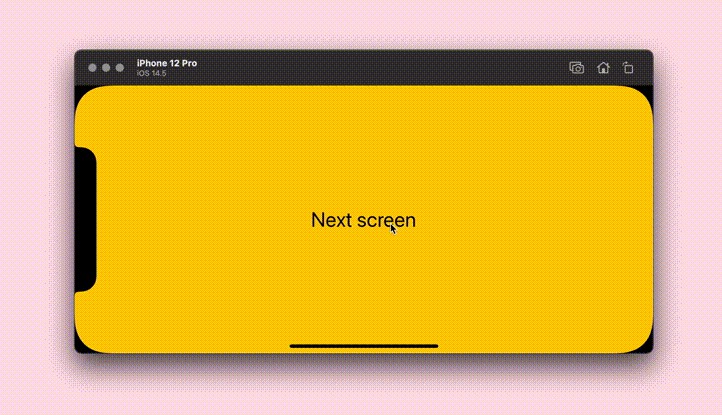RoutingReducer
RoutingReducer is a framework for stateful navigation for stacks and modals with TCA. It is loosely inspired by the coordinator pattern, can be adopted gradually and be used recursively.
Instalation
RoutingReducer is available via Swift Package Manager.
dependencies: [
.package(url: "https://github.com/mtzaquia/RoutingReducer.git", .upToNextMajor(from: "0.0.11")),
],
Usage
RoutingReducer builds a developer-friendly navigation pattern on top of The Composable Architecture (TCA). It tries to use familiar concepts for those already working with TCA, and is designed to be attached to an existing implementation of reducers, assuming they are already using the latest ReducerProtocol approach.
RoutingReducerProtocol
The RoutingReducerProtocol is the base for a given flow. It is the one that will be used to build the root view and handle all the possible navigation routes available within the routes it defines.
It is essentially a ReducerProtocol, but with additional requirements:
- The
Statemust conform toRoutingState - The
Actionmut conform toRoutingAction - A type called
Routemust be declared, and it must conform toRouting - Instead of
body, you need to providerootBody,routeBodyand a function to bridge reducer actions to concrete navigation actions.
struct MyRouter: RoutingReducerProtocol {
enum Route: Routing {
// the available routes for this reducer, their actions and IDs.
}
struct State: RoutingState {
let id = UUID() // declaring an arbitrary ID is fine.
var navigation: Route.NavigationState = .init()
var root: MyRoot.State
}
enum Action: RoutingAction {
case navigation(Route.NavigationAction)
case route(UUID, Route.Action)
case modalRoute(Route.Action)
case root(MyRoot.Action)
}
var rootBody: some RootReducer<Self> {
MyRoot()
}
var routeBody: some RouteReducer<Self> {
Scope(
state: /Route.first,
action: /Route.Action.first,
First.init
)
// other scoped reducers for all routes declared on this reducer...
}
func navigation(for action: Action) -> Route.NavigationAction? {
// a closure resolving this reducer's actions to a navigation action.
}
}
Routing
The Routing protocol defines all available routes for a given flow, and is a required conformance to the Route type on RoutingReducerProtocol conformances.
It is important to mention that routes require an ID. The way the ID is defined will determine whether the same view can be pushed/presented more than once on the same flow. That’s why states belonging to a flow must conform to RoutedState.
For example, the conformance below allows for the same screen to be pushed multiple times, as it uses the state’s ID to identify itself (assuming namely IDs are different):
enum Route: Routing {
case first(First.State)
case second(Second.State)
enum Action {
case first(First.Action)
case second(Second.Action)
}
var id: UUID {
switch self {
case .first(let state): return state.id
case .second(let state): return state.id
}
}
}
Whereas the example below will never allow for first to be presented more than once:
enum Route: Routing {
case first(First.State)
enum Action {
case first(First.Action)
}
var id: UUID {
switch self {
case .first: return "first"
}
}
}
WithRoutingStore
Every view that is the base of a given router should hold a store of that reducer and extract the current presentation state using the special WithRoutingStore view, as well as provide all possible views via the routes: parameter.
struct MyRouterView: View {
let store: StoreOf<MyModalRouter>
var body: some View {
WithRoutingStore(store) { rootStore, navigation, modal in
// `rootStore` must be given to the root view of your router
// `navigation` may be provided to a `RoutedNavigationStack` if you expect a navigation stack in your flow.
// `modal` may be unwrapped and provided to SwiftUI modifiers for presenting a sheet, for instance.
MyRootView(store: rootStore)
.sheet(item: modal.item, content: modal.content)
} routes: { store in
SwitchStore(store) {
CaseLet(
state: /MyModalRouter.Route.modal,
action: MyModalRouter.Route.Action.modal,
then: ModalView.init
)
}
}
}
}
RoutedNavigationStack
If you would like to deal with a stacked navigation, you should use RoutedNavigationStack as the top-level view in your WithRoutingStore declaration. This view will receive the navigation state extracted from your store using WithRoutingStore and the root view for the navigation flow.
struct MyNavigationRouterView: View {
let store: StoreOf<MyNavigationRouter>
var body: some View {
WithRoutingStore(store) { rootStore, navigation, _ in
// Pass the `navigation` along to your `RoutedNavigationStack` initialiser.
RoutedNavigationStack(navigation: navigation) {
// The root view is now declared as part of the `RoutedNavigationStack`
// and will act as the navigation root, receiving the `rootStore` instance.
MyRootView(store: rootStore)
}
} routes: { store in
// All your navigation destination views with SwitchStore/CaseLet...
}
}
}
You can, naturally, combine navigation and modality at will.
Known limitations and issues
- There is no convenient way to use different modal presentations for different routes, though this can be achieved with a custom binding;
- Effect cancellation needs to be handled manually;
- Dismissing a screen while editing a value with
@BindingStatewill warn of unhandled actions.
License
Copyright (c) 2023 @mtzaquia
Permission is hereby granted, free of charge, to any person obtaining a copy of this software and associated documentation files (the “Software”), to deal in the Software without restriction, including without limitation the rights to use, copy, modify, merge, publish, distribute, sublicense, and/or sell copies of the Software, and to permit persons to whom the Software is furnished to do so, subject to the following conditions:
The above copyright notice and this permission notice shall be included in all copies or substantial portions of the Software.
THE SOFTWARE IS PROVIDED “AS IS”, WITHOUT WARRANTY OF ANY KIND, EXPRESS OR IMPLIED, INCLUDING BUT NOT LIMITED TO THE WARRANTIES OF MERCHANTABILITY, FITNESS FOR A PARTICULAR PURPOSE AND NONINFRINGEMENT. IN NO EVENT SHALL THE AUTHORS OR COPYRIGHT HOLDERS BE LIABLE FOR ANY CLAIM, DAMAGES OR OTHER LIABILITY, WHETHER IN AN ACTION OF CONTRACT, TORT OR OTHERWISE, ARISING FROM, OUT OF OR IN CONNECTION WITH THE SOFTWARE OR THE USE OR OTHER DEALINGS IN THE SOFTWARE.




